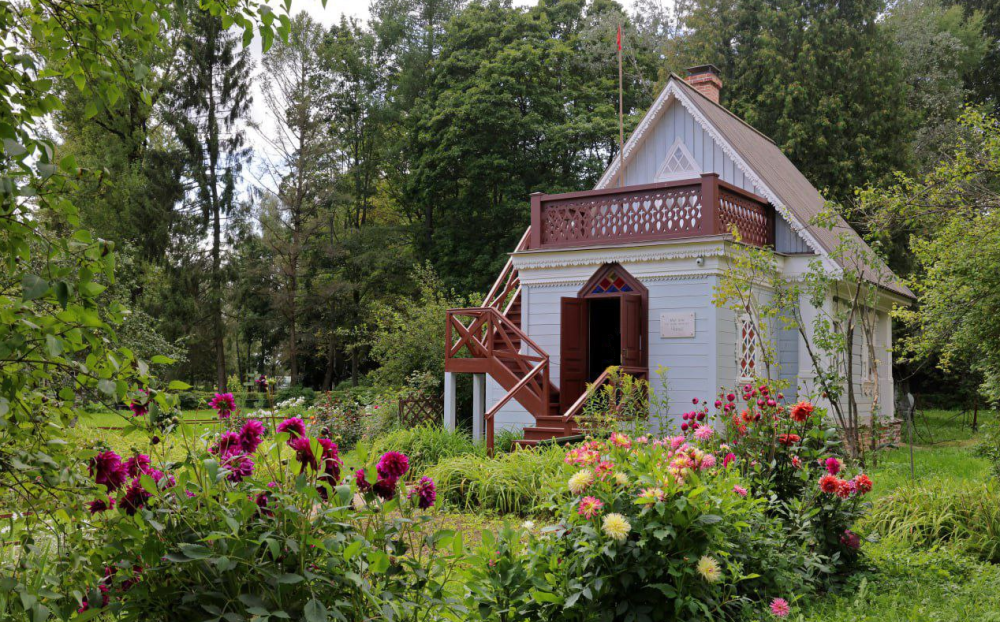ABOUT THE EXPOSITION
The Chekhov family hospitable home was often visited by many guests. The house was small and crowded, that in such occasions they did not know how to accommodate everyone. To handle this situation somehow, they decided to construct a small separate house on the manor grounds. Anton Chekhov wrote about this idea to the French philologist, Slavist, Germanist and translator Jules Legras: "I started building a separate wing. I hope that it will be ready by June 20 <...>. There will be two rooms in the wing <...>. The attic will be high and with a balcony" (May 19, 1894).
In his diary, Chekhov's father Pavel Egorovich wrote about the work in the new wing: "July, 16th. It is raining. The carpenters finished the wing, have left", "July, 18th. <...> The stove makers are building a stove in the wing." And on July 30th, he noted: "I spent the night in the new wing."
Anton Pavlovich was very proud of his "toy", the house turned out to be elegant. The wing was surrounded by berry bushes, and in order to get inside, one had to pass through an apple orchard. "My wing appeared to be small, but amazing. The carpenters charged me 125 rubles for their work, and arranged me a toy house for which at the exhibition they would have offered me all 500 rubles." (A.P. Chekhov – A.S. Suvorin, June 26, 1894).
The Chekhov family's guests often stayed in the wing for a long period of time. However, later on, Anton Pavlovich came to realize that it would be a good idea for him to move into this wing as well, in order to create better environment for his creative process. Judging by observations of Chekhov’s father Pavel Egorovich, the writer liked to work in the wing: "Antosha moved to a hermitage, labors in fasting and writing pains, retreating from the worldly vanity as a hermit."
Here, Chekhov wrote his two famous plays: in the autumn of 1895, he completed "The Seagull", and in 1896 – "Uncle Vanya". In the summer months of 1898, after returning from Nice, Chekhov worked on the trilogy "The Man in a Case", "Gooseberry", "About Love" and the story "Ionitch".
On May 5th, 1899 Chekhov sent a photo of his Melikhovo wing as a kind of an invitation to his future wife Olga L. Knipper, with the inscription: "My house, where The Seagull was written." Olga Leonardovna Knipper in good memory."
It was the last year of the Chekhovs’ Melikhovo life. In the autumn of 1898, Pavel Egorovich died, and Chekhov thought about selling the estate: "It seems to me that after the father’s death, life in Melikhovo will no longer be the same, as if the course of Melikhovo life ceased with his diary."
At first the estate was acquired by a timber merchant named M.V. Konshin. However, he failed to pay off. In 1903, it was again sold to Baron Nikolai D. Stewart, who owned it for the period until the Revolution. After the Revolution, the estate was nationalized. Later, on the land of the former Chekhov’s manor, new local authorities founded a collective farm.
This wing is the only manor building that had survived by the time the Chekhov Museum was founded in Melikhovo in 1940. It was there, where the first exposition was set up, which initiated cultural and educational activity of the museum.




